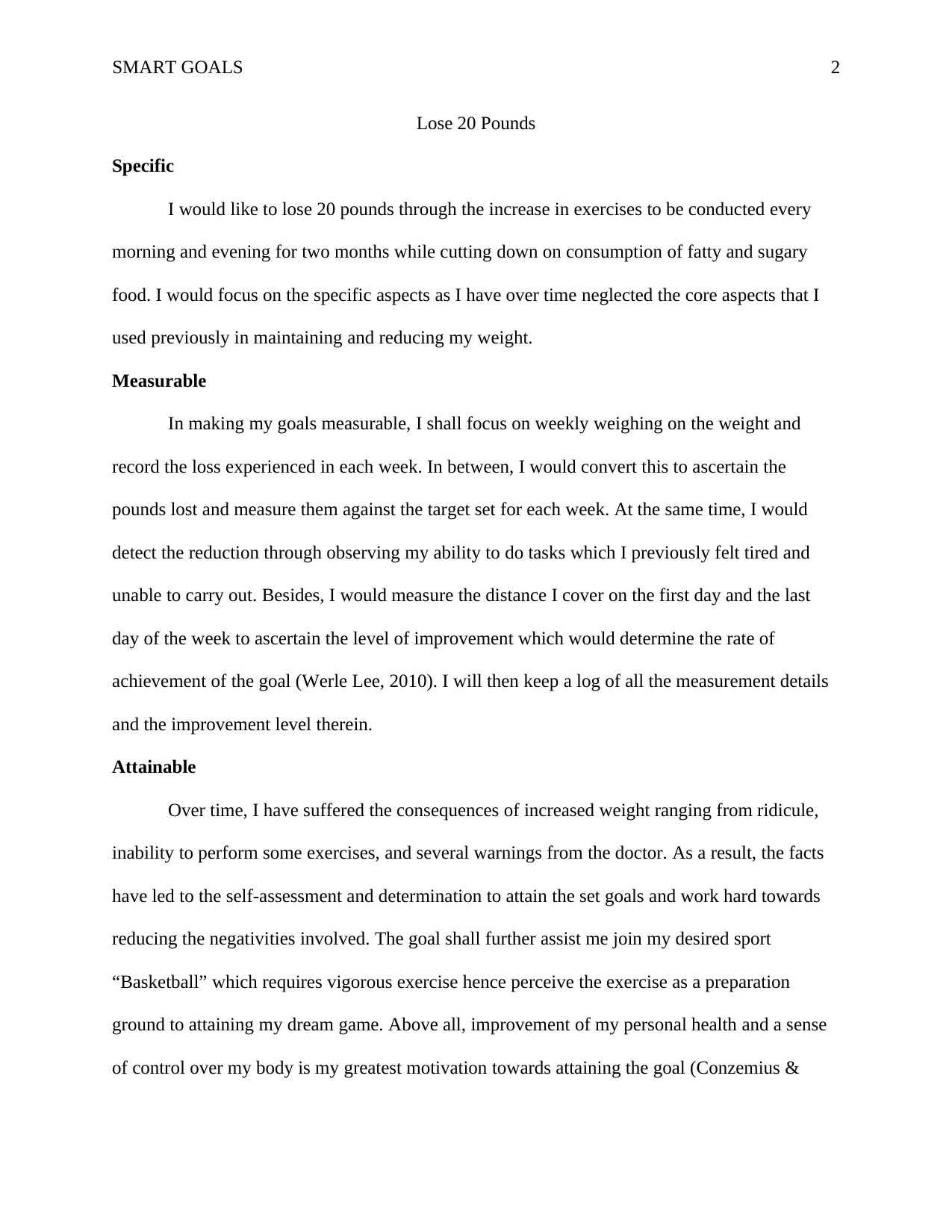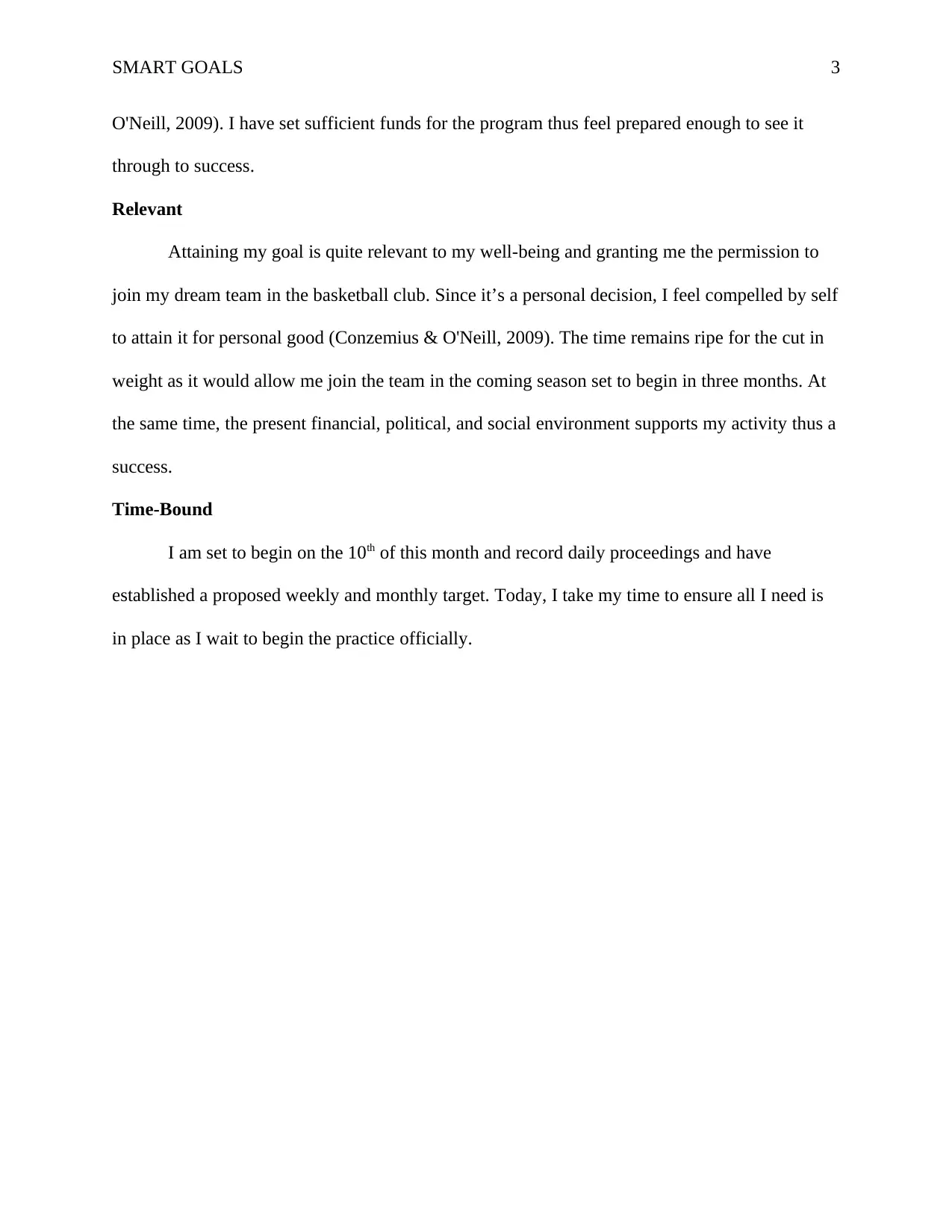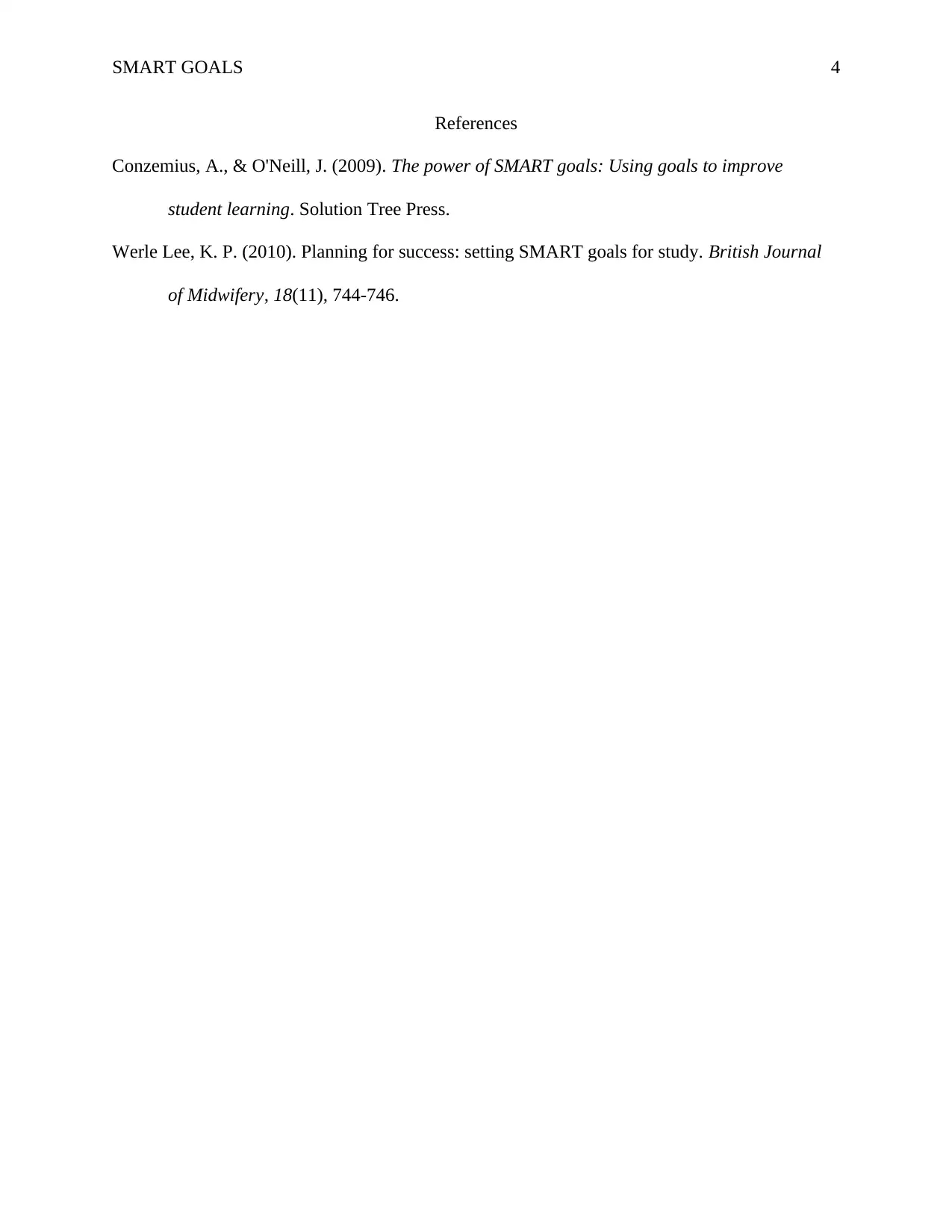Personal Weight Loss Plan Using SMART Goals: A Case Study
VerifiedAdded on 2023/06/15
|4
|574
|99
Essay
AI Summary
This essay details a personal weight loss plan centered around the SMART goals framework. The author aims to lose 20 pounds through a combination of increased exercise and dietary adjustments over two months. The plan incorporates specific actions such as morning and evening exercises, reduced consumption of fatty and sugary foods, and weekly weight measurements to track progress. The attainability of the goal is reinforced by the author's desire to improve health, join a basketball team, and gain control over their body. The relevance of the goal is tied to personal well-being and athletic aspirations, with the timing aligned with the upcoming basketball season. The plan includes a clear start date, daily tracking, and weekly/monthly targets, ensuring it is time-bound. References to academic sources support the effective use of SMART goals in achieving personal objectives.
1 out of 4











![[object Object]](/_next/static/media/star-bottom.7253800d.svg)